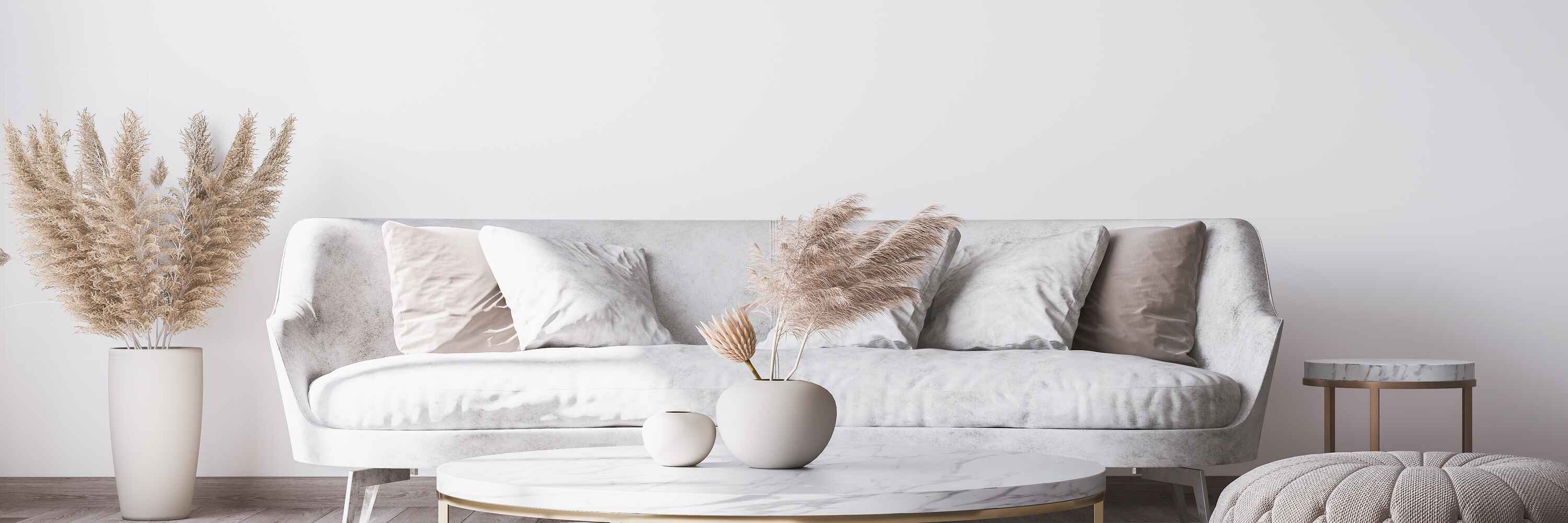November 04th, 2021
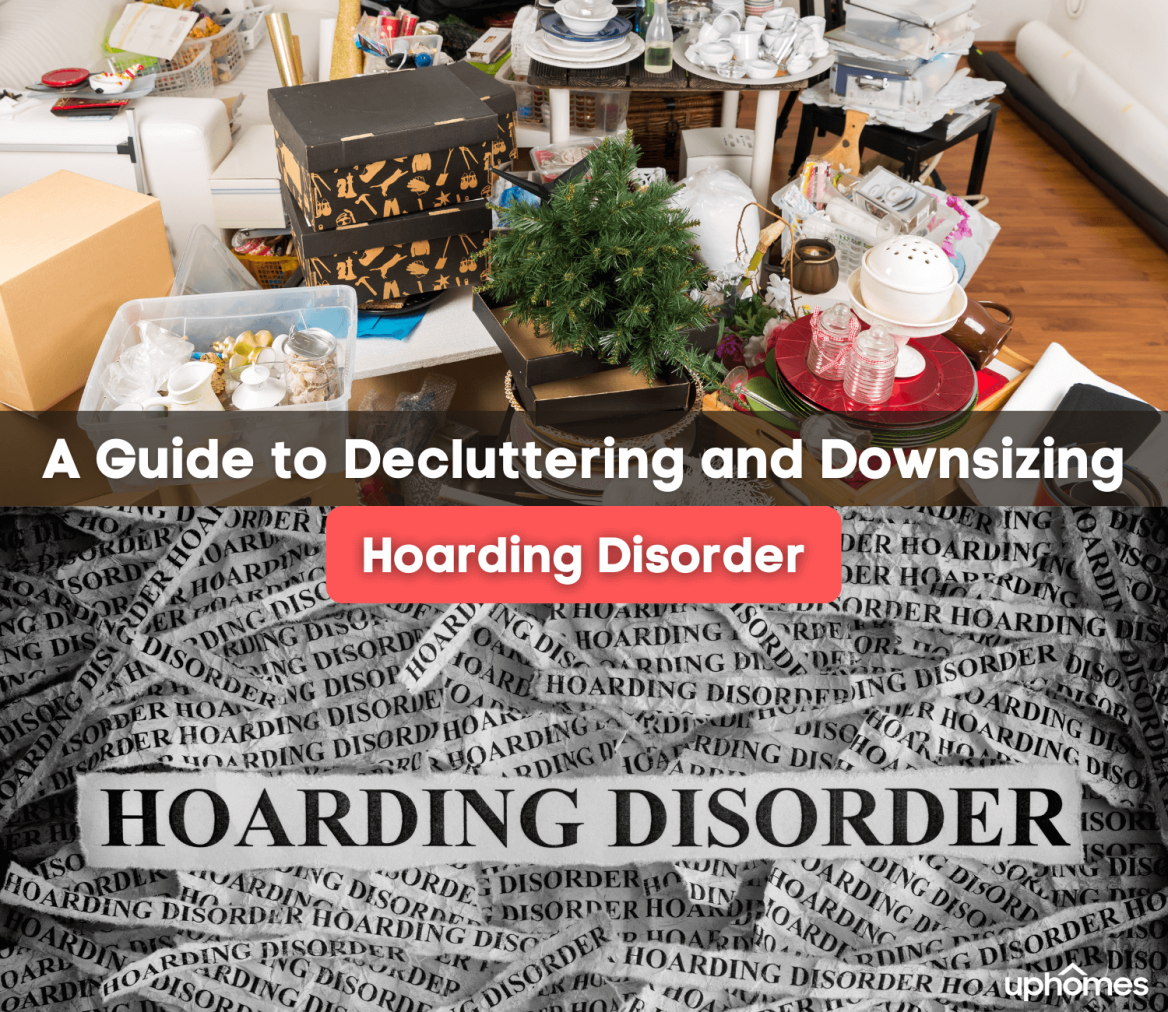
How To Declutter And Downsize: A Guide For Hoarders And Their Loved Ones
Understanding Hoarding Disorder
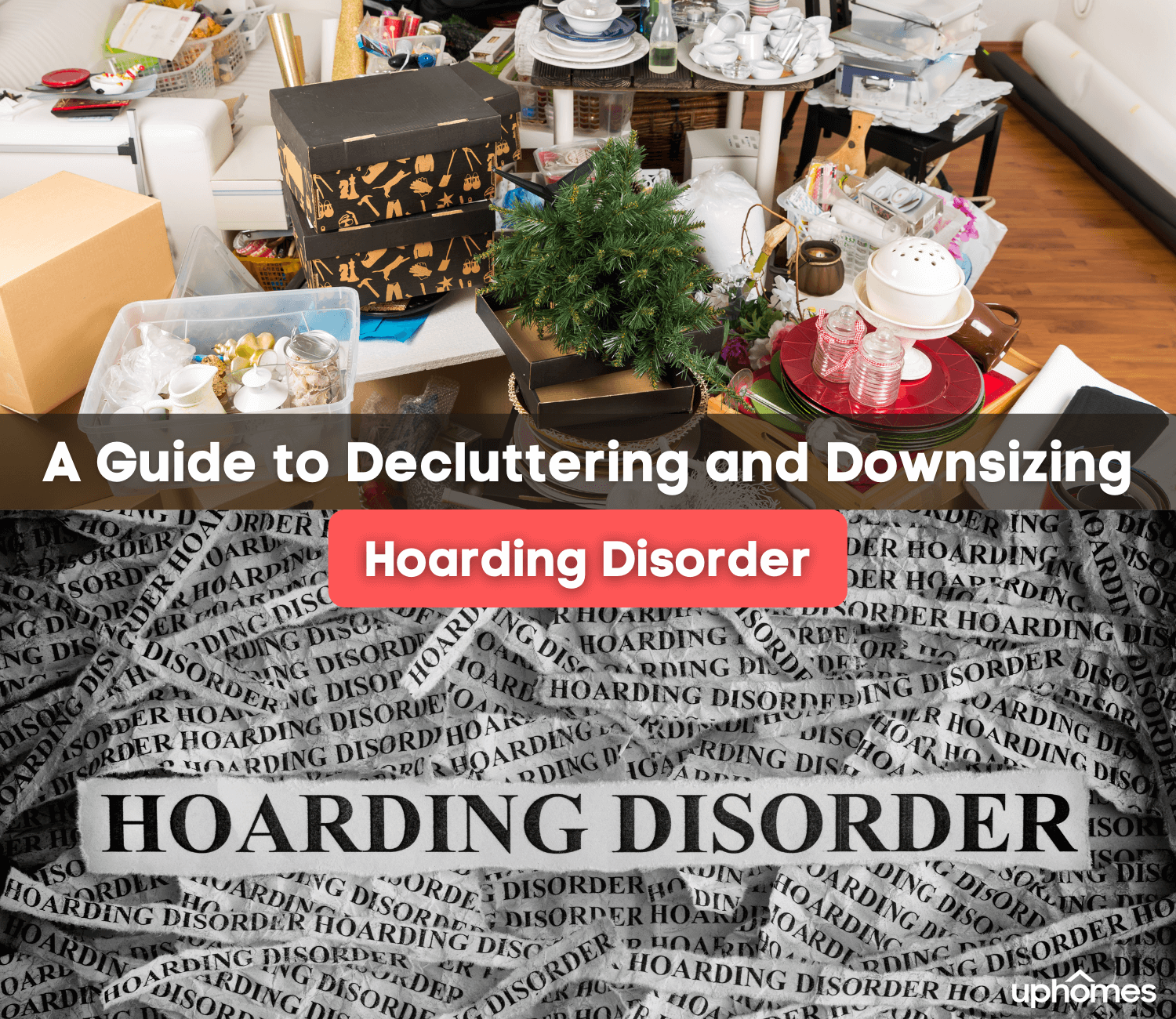
What is Hoarding Disorder?
Hoarding can be defined as the difficulty of discarding or getting rid of personal possessions and items no matter their actual significance or value. Normally associated with compulsive buying, those who suffer from hoarding disorder can be recognized due to the number of collected items in the home or the continued search for unique items. While the items that most hoarders collect vary, possessions such as newspapers, photographs, food, cardboard boxes, and clothing are among the most common items that are hoarded.
The most common symptoms of hoarding include:
-
Not being able to get rid of possessions
-
Anxiety regarding discarding possessions
-
Indecision about where to store items
-
Feeling overwhelmed or embarrassed by possessions
-
Obsessive tendencies and thoughts
-
Fear of others touching items
-
Social isolation
People may choose to hoard for many reasons but most of the time it is due to an attachment of sentimental value or because one believes a certain item will become valuable in the future. While hoarding can be diagnosed on its own, sometimes it can be associated with other disorders such as depression, obsessive-compulsive disorder, obsessive-compulsive personality disorder, or attention-deficit/hyperactivity disorder.
What’s the Difference Between Clutter and Hoarding Behaviors?
Even though a person may own a lot of things and may not be particularly organized and clean, this does not automatically mean that they have a hoarding disorder. Most households can be messy so it important to distinguish the difference between normal everyday clutter and common hoarding behaviors.
So what is clutter? Clutter can be defined as a collection of items and mess that is spread out and piled up in a disorganized fashion. Clutter is a common occurrence in busy households and can be easily cleaned up. The home is generally still safe to live in and move around in since most clutter often occurs in storage spaces and some living spaces. There is no set planned acquisition of items and the occurrence of clutter is not a cause of major distress.
Hoarding on the other hand can be recognized when large collections of items without a specific theme take up space in living areas to the extent that they can not be used as designed. The thought of getting rid of said items may cause major distress and uncomfortable feelings as well as financial and relationship problems. If a person finds themselves using a bathtub as a storage unit and can not safely walk up and down the stairs due to large quantities of items, then they most likely have hoarding disorder.
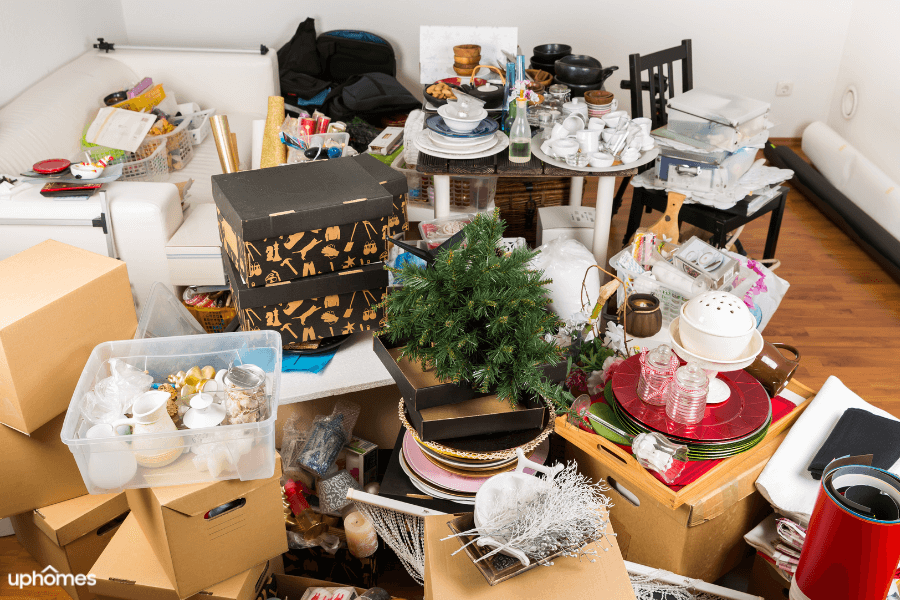
The Five Levels of Hoarding
Hoarding can be separated into five distinct levels which can identify how severe a person’s disorder may be. Varying from mild to extreme levels of hoarding, these five levels are referred to in order to help people dealing with this condition. Created by evaluating certain factors, the level in which a person belongs depends on the accessibility of windows and doors, the level of animal control, the amount of clutter inside and outside of the home, if rooms are usable, and the number of health hazards that are present.
Level One
-
Light clutter
-
No odors
-
Safe conditions
-
Easy accessibility to doors, windows, and stairs
Level Two
-
Nonfunctioning household appliances
-
Evidence of pests
-
Animal waste
-
Odor
-
Mildew
-
Congestion in hallways, stairs, entrances, and exits
Level Three
-
Clutter outside of the home
-
Unusable living spaces
-
Lack of sanitation
-
Bug infestations
-
Heating and air conditioning not working
Level Four
-
Mold and mildew are noticeable
-
Structural damage to the home
-
Rotting food
-
Bug infestations in beds and furniture
-
Bats and rodents living in the walls
-
Water damage
-
Broken windows
-
Entrances, exits, hallways, and stairs are not accessible
Level Five
-
Most severe
-
No electricity or running water
-
Human feces is noticeable throughout the home
-
Animals present and are of poor health
-
Broken walls
-
Fire hazards
-
Severe structural damage
-
Major infestations of rodents and bugs
Types of Hoarding
Since hoarders can collect many different items it is important to understand the types of hoarding and how they can appear in a household. While hoarders tend to gain an attachment to certain possessions, the first step to recovery is to identify what is being hoarded and why.
1. Collectors
What started off as a valuable collection can easily turn into a worthless pile of junk without any clear sentimental value or purpose. Collection hoarders have a constant need to obtain new items even though they have no real meaning. While a collection is supposed to bring pride and joy to a collector, this type of hoarding often brings embarrassment and distress instead.
2. Researchers
This type of hoarding includes the collection of books, learning materials, encyclopedias, newspapers, magazines, and any other type of publication. Research hoarders tend to hold on to material for years even if they lack real value.
3. Non-Wasters
Consisting of food hoarding, recycle hoarding, trash hoarding, and shopping hoarding, non-wasters tend to not get rid of anything. Even if the food or item has expired, this type of hoarding stems from the need to always be prepared in case of an emergency or if they think an item might be needed in the future.
4. Animal Hoarders
This type of hoarding stems from the need to love and take care of as many animals as one person can. The health and proper care of animals are often overlooked in this situation and living conditions can decline rapidly.
5. Over-Sentimental Hoarders
Caused by a stressful or traumatic event, this type of hoarding involves the collection of items that may be associated with a specific memory. These behaviors can be brought on by the loss of a loved one, the end of a joyful time in life, or the constant craving for something that does not currently exist.
Who is at Risk of Hoarding?
While there may be no specific cause of hoarding, there are certain types of people that are at a higher risk of developing hoarding tendencies. Whether it's due to a combination of different factors or a previous traumatic experience, there are many variables that could be the root of this condition.
1. Depression
People with depression are at a high risk of hoarding and are by far the most common to develop this condition. Due to painful feelings and a depressive state of mind, people may start to hoard in order to cope with mental health issues.
2. Trauma and Loss
Past experiences such as abuse, a bad breakup, loss of a loved one, feeling lonely, or dealing with health problems may lead to hoarding
3. Perfectionism
Those that find it hard to make decisions might have a hard time figuring out where to keep things in the house or what to throw away.
4. OCD/ADHD
Other mental health problems may lead to hoarding. Those that have obsessive-compulsive disorder or attention-deficit/hyperactivity disorder may have a particularly hard time parting with possessions.
5. Heredity
If one grew up in a hoarding household then they are more likely to develop the condition as well.
6. Dementia
A person with dementia may start to hoard in order to gain a sense of control over their lives.
7. Head Trauma
This may include strokes or other types of traumatic brain injuries. Brain lesions or abnormal brain development have been seen to lead to compulsive tendencies and hoarding.
The Dangers of Hoarding
Hoarding disorder can be dangerous to not only your home but to your overall health and wellbeing. Known to cause a multitude of problems that can pose a serious risk to individuals and their families, there are certain complications that need to be brought to light.
The dangers of hoarding may or may not be limited to:
-
Increased risk of falls and injury
-
Poor air quality
-
Health complications
-
Plumbing problems
-
Mildew and fungus
-
Sanitation issues
-
Pest infestations
-
Loneliness and isolation
-
Family conflicts
-
Fire hazard
-
Financial difficulties
-
Legal issues which can lead to eviction
-
Homelessness
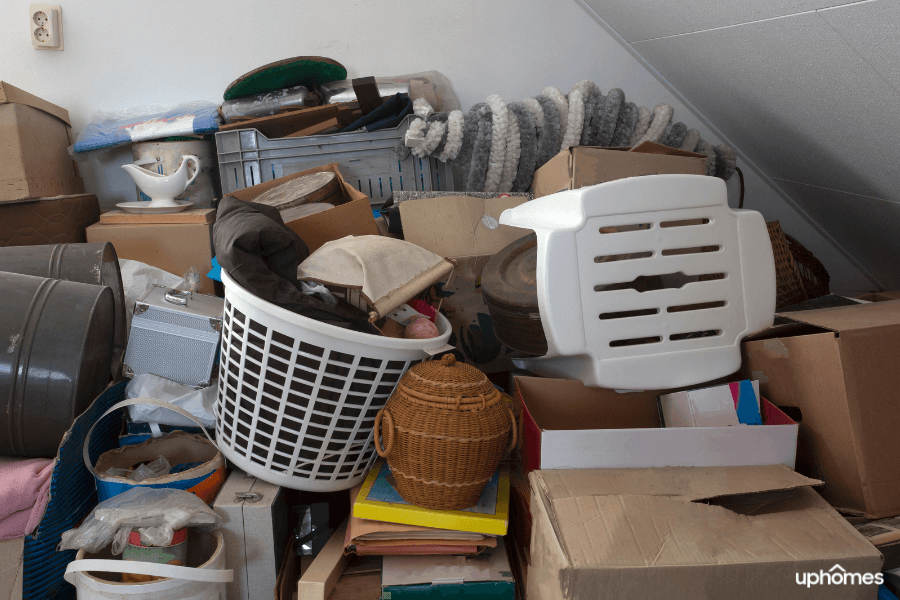
How Do You Identify Hoarding Behaviors?
Most signs of hoarding are obvious and can be spotted right away. In severe hoarding situations, signs such as rotting food and structural damage are a dead giveaway to how an individual may be suffering. On the other hand, mild cases are not as easy to recognize. Since most if not all hoarding cases start small and gradually increase in severity over the years, it is necessary to understand the early warning signs to help identify even the most simple hoarding behaviors.
Signs of hoarding may include:
-
Inability to throw away or sell possessions
-
Clutter throughout the home makes it difficult to move around and use living spaces
-
Piles of items such as newspapers and mail keep falling over
-
Sleeping with clutter on bed
-
Having a tough time making decisions
-
Parts of the home are closed off from others
-
Failure to pay bills or make repairs to the home
-
Disorganization
-
Collecting free things
-
Compulsive buying and shopping
-
Problems with attention
-
Not allowing others to touch possessions
-
Not realizing the severity of the problem
-
Moving things from pile to pile without getting rid of things
How Do You Help a Hoarder?
If you know someone with a hoarding disorder then it is common to feel overwhelmed and frustrated trying to change their behavior. Sometimes it is even easy to feel like the hoarder values and cares about their possessions more than their personal relationships. While it may be easy to get upset with their unhealthy lifestyle, it is imperative to remember that hoarding is a serious mental health disorder. By approaching this issue with patience and compassion, you can help guide your loved one to the path of recovery.
Understanding the Challenges of Decluttering for Hoarders
Even the most severe hoarder might not understand that their lifestyle is unhealthy. With that being said, the road to recovery might be a difficult one with many challenges. If someone does not recognize that they have a problem then it might be hard to bring up the subject to your loved one. In this case, effective communication is key. Instead of being judgemental and arguing, start by understanding the situation and offering to help. Start by focusing on the person rather than the possessions by bonding over other interests and addressing any other mental health conditions. Motivate your loved one by setting achievable goals, identifying shopping habits, and celebrating even the smallest victory.
Helping Elderly Hoarders
The appearance of hoarding behaviors can increase rapidly with age. In fact, the largest population of hoarders consists of single and divorced females from the age of 50 to 85 years old. Seniors in particular are at a higher risk of experiencing the dangers that hoarding can bring on. Senior hoarders that choose to age in place, in particular, are known to develop other mental health issues such as depression, anxiety, or social isolation. Unsanitary conditions, high fall risk, fire hazards, and prevention from emergency care are other hidden dangers that you need to be aware of.
Decluttering and Downsizing Best Practices for Hoarders
Once hoarding tendencies have been recognized and the hoarder is ready to move on, it should be time to clean the home. Start by developing an action plan and strategy for waste removal. If unsanitary conditions persist such as excessive filth, infestations, or buildup of waste, then the landlord or local health department should be contacted.
How to help a hoarder clean:
-
Make a schedule to stick to
-
Set realistic goals
-
Determine criteria to get rid of items
-
Start simple with doorways, hallways, and stairways
-
Get items out of the house as soon as possible
-
Consider securing a storage space for easy removal
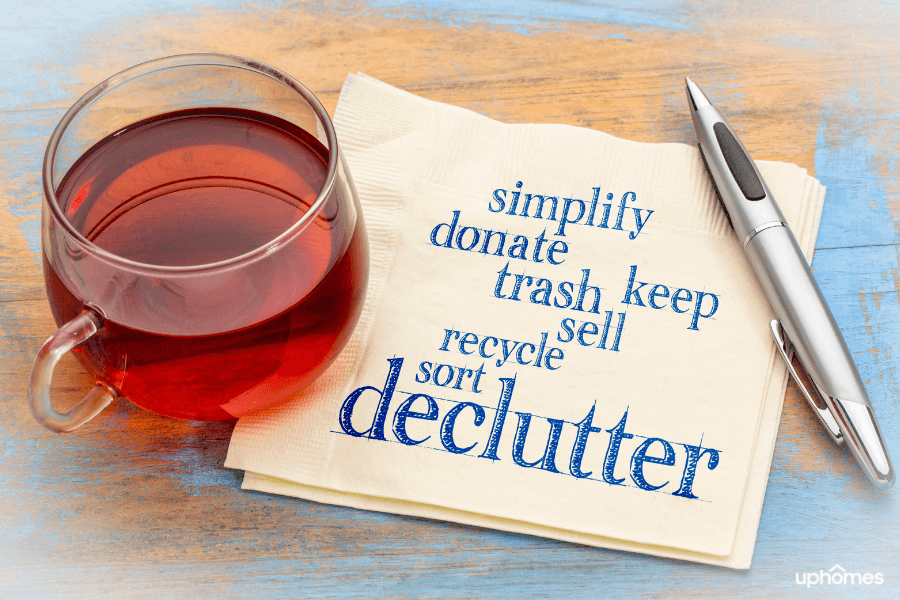
Decluttering Room by Room
Choosing to focus on one room at a time before moving on to the next space is the most time-effective way to declutter and organize your home. By creating a sorting system, decide which items to donate, throw away, store, recycle, or fix.
1. The Living Room
-
Start with bookcases, side tables, and the console
-
Decide on permanent storage spaces
-
Reduce all paper clutter
2. Kitchen
-
Start by emptying each storage space and assessing each item
-
Focus on one category at a time
-
Only keep what you will use every day on the countertops
3. Bathroom
-
Start with the medicine cabinet
-
Discard any outdated medicine, makeup, or skincare products
-
Keep items that you use the most in top drawers
4. Bedroom
-
Make the bed
-
Start by removing anything that does not belong on the nightstands
-
Throw away or donate anything that is no longer used
5. Closet
-
Start by decluttering by clothing type
-
Wash any dirty laundry
-
Donate clothing that is no longer worn
6. Home Office
-
Keep your home office clutter-free by organizing any loose cords
-
Put any loose desk items into drawers
-
Categorize drawers by similar items
7. Stairways and Hallways
-
Gather all items off of the stairs before organizing to avoid tripping hazards
-
Buy a coat rack to organize jackets
-
Find somewhere to store shoes
8. Garages, Attics, and Basements
-
All cleaning does not have to be done in one day
-
Put loose items in boxes
-
Install shelving units
What To Do With Unwanted Items
Once you and your loved one have gone through each room and determined what to keep, it is time to get rid of all unwanted items. All possessions that will no longer be kept need to be organized into piles depending on their intended final destination. Since there are so many ways to discard unwanted items, it is best to consider the purpose and condition of the item before making a decision. Most people decide to either donate, sell, or gift unwanted items. Recycling is another great option that will also help reduce your carbon footprint.
What Happens if the House is Unliveable?
In the case of severe hoarding situations, sometimes the home is no longer liveable due to unsanitary conditions and structural damage. Once items have been cleaned and decluttered, then it is time to evaluate all other options if the home is deemed unliveable.
Legal Aspects of Hoarding
Hoarding dangers that arise which make the house unlivable can lead to legal issues that need to be addressed. Some of the most common instances that would involve the legal system in these situations include the involvement of a landlord. If a tenant or renter is living in unsanitary conditions and violates the lease then they can face eviction.
Other instances involving the legal system during a hoarding case may include:
-
Protective services for abuse or neglect involving children, elderly, or disabled adults in the home
-
Neglect or abuse of animals in the home
-
Violation of health and safety codes on the property
Moving to a New Home
If your loved one’s home is no longer liveable then it is probably time to start looking for a new place to live. For those living on a property that has been impacted by a compulsive hoarder, the impending move might look a little different. The first step is to figure out where you want to move to. If you want to find real estate in Charlotte for instance then you need to decide if you want to rent or are looking for new construction homes for sale. Before selling your home, make sure to fill out a home evaluation. Visit Uphomes.com today and reach out to one of our Realty Specialists to help navigate the home buying process.
Additional Help for Hoarders
-
International OCD Foundation: Learn about hoarding disorder, get involved, and find help in your area.
-
Clutterers Anonymous: Join this 12-step program and share your experience with others.
-
Children of Hoarders: This online support group was created to bring together people who grew up with a hoarder.
-
Piece of Mind Foundation: Find resources and treatment options related to hoarding disorder.
-
The Clutter Movement Family Support Facebook Group: The support group was created for families with issues related to hoarding and clutter.
-
National Alliance on Mental Illness: The largest mental health organization in America.

Ryan Fitzgerald
Hi there! My name is Ryan Fitzgerald, and I am a REALTOR®. My goal is to help you learn more about real estate through our Real Estate Blog! Hopefully, you enjoyed the above blog post and it found a way to provide help or value to you. When you're ready to buy or sell a home of your own let us know here. Please feel free to join the conversation by dropping us a comment below.

